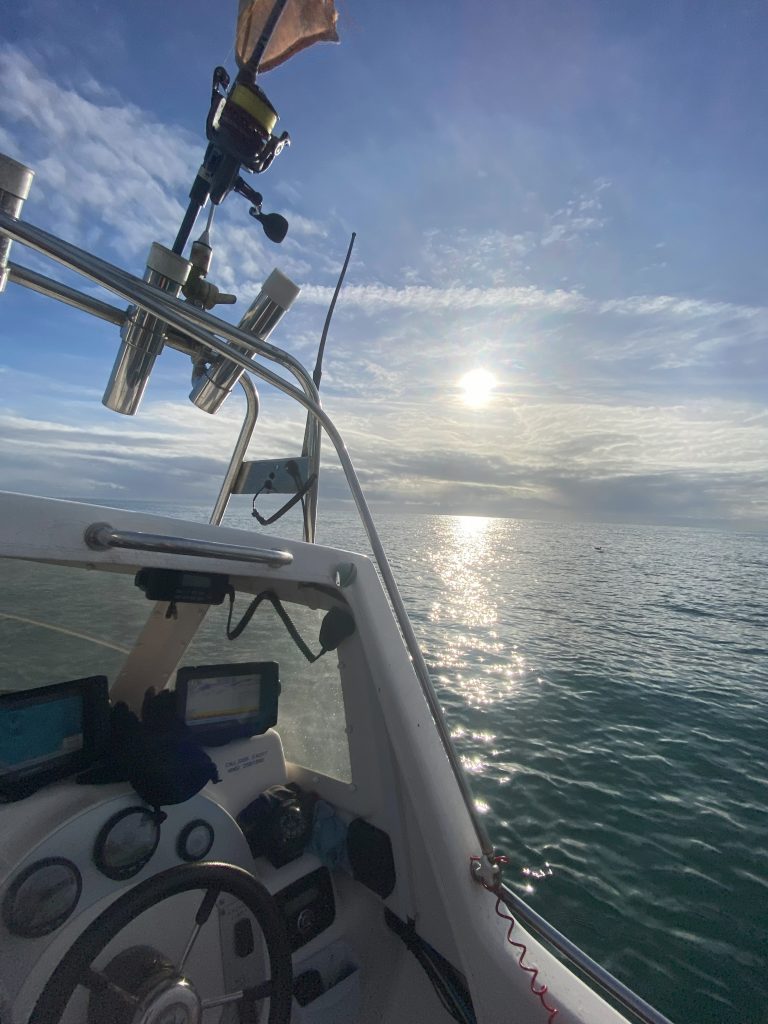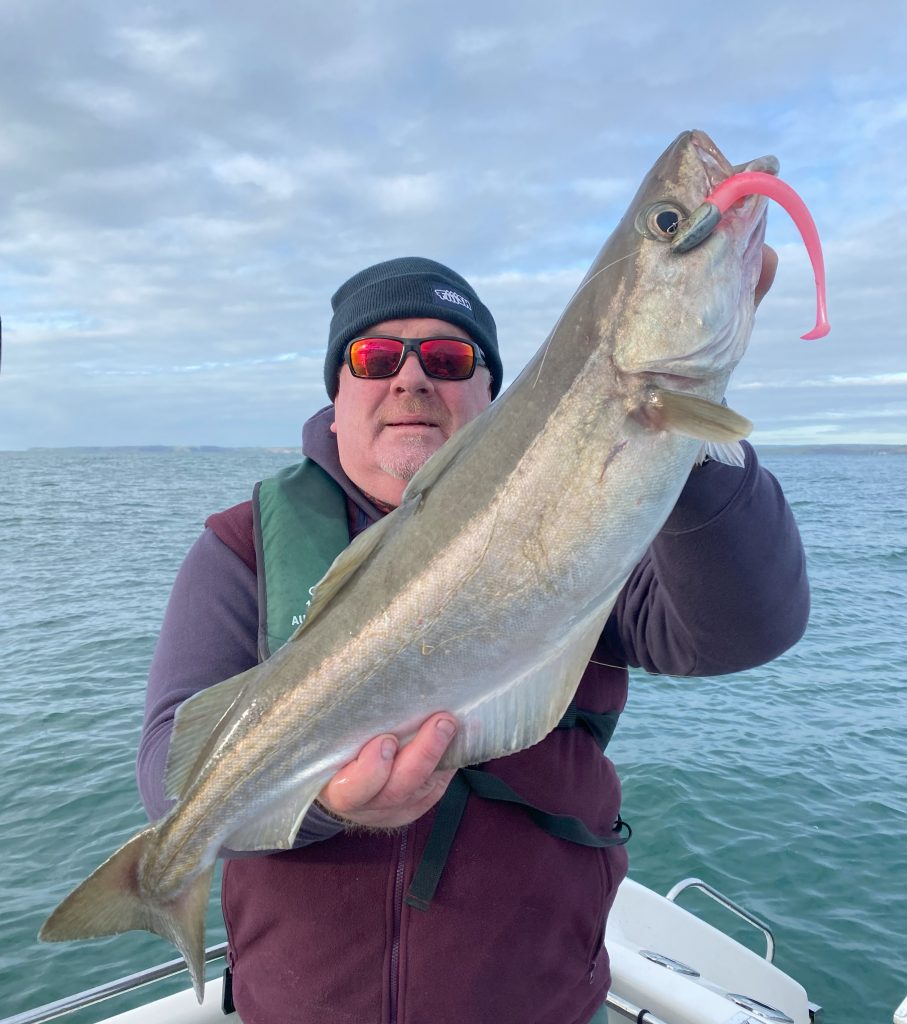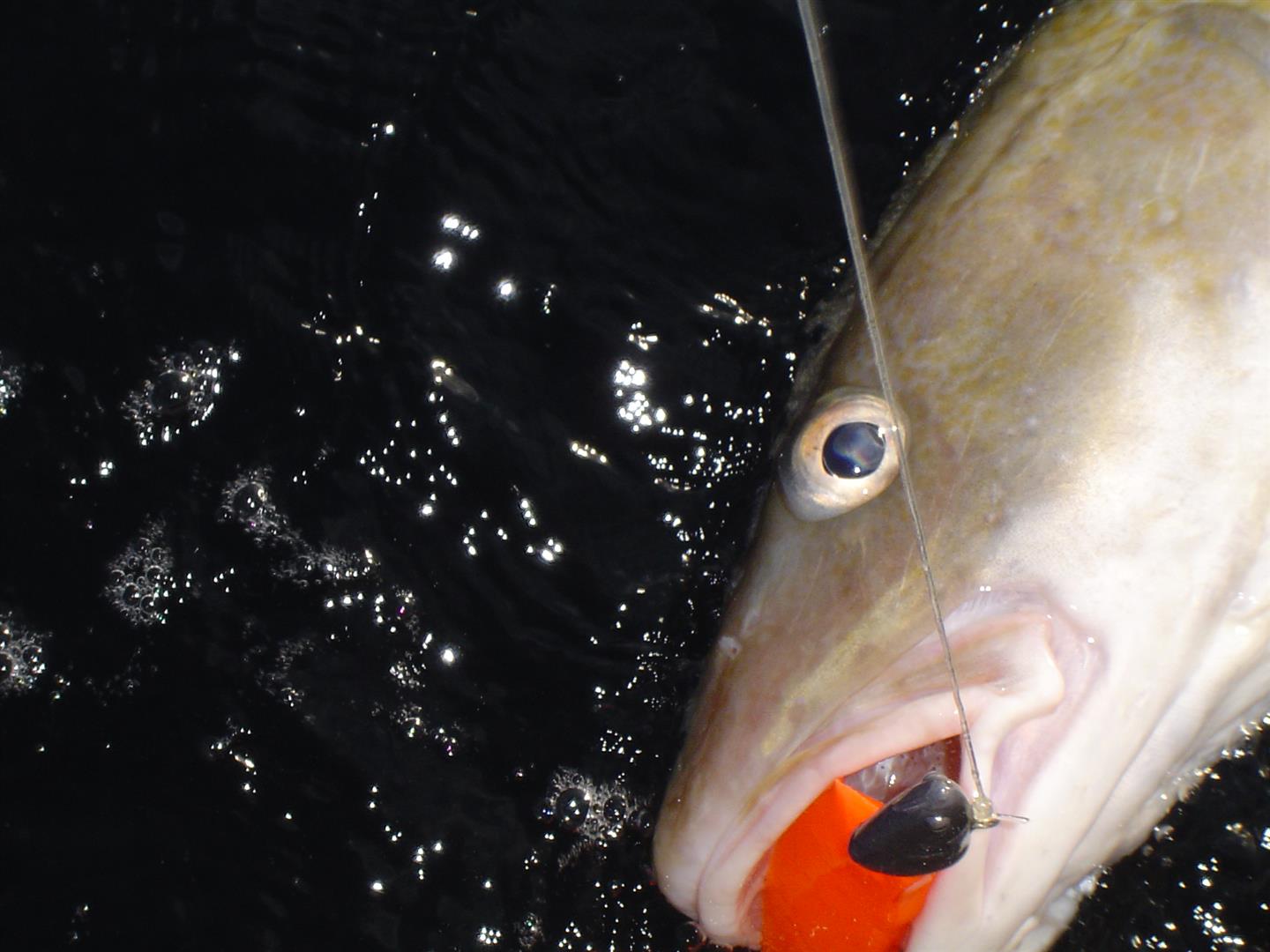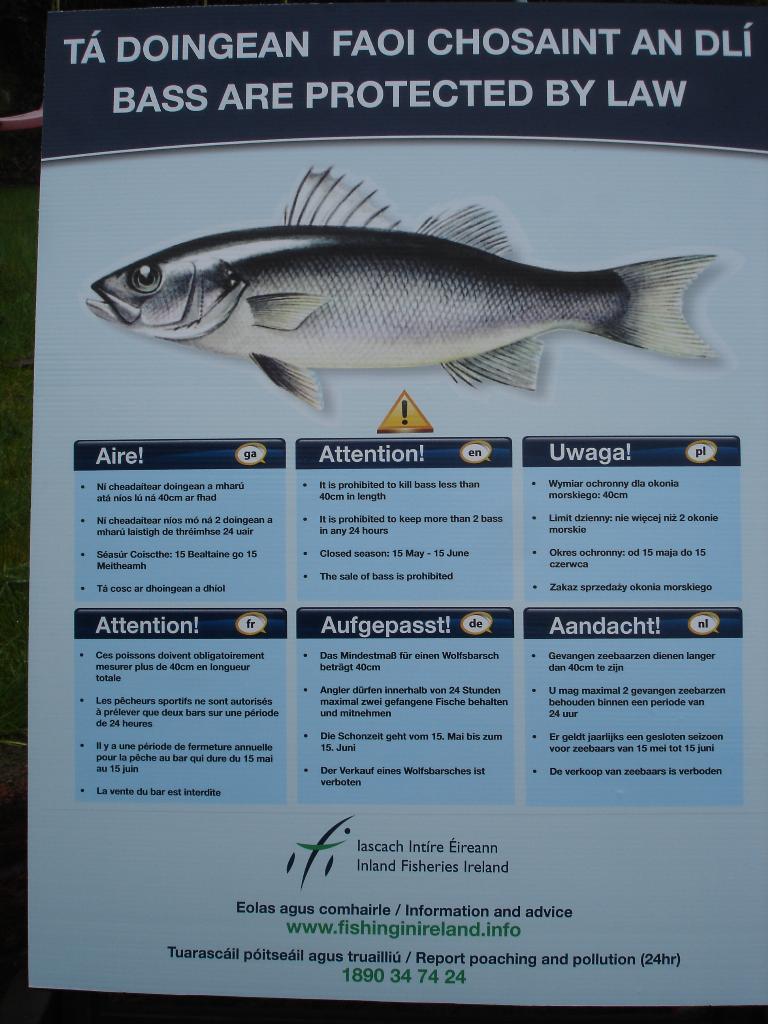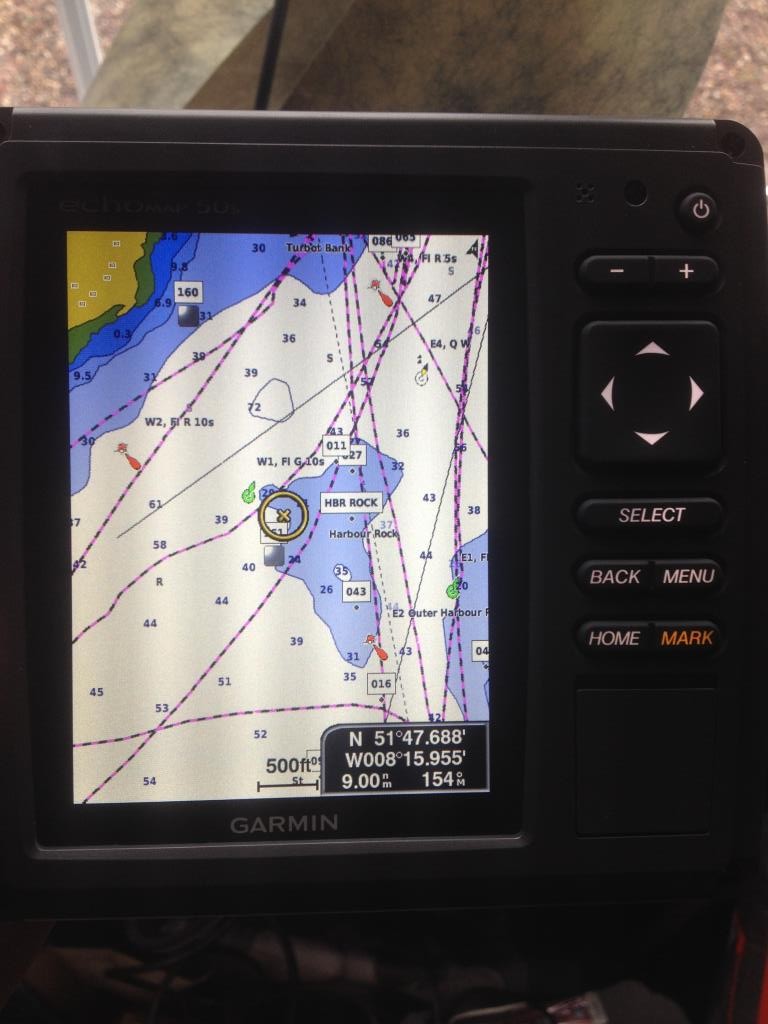** Winter Running **
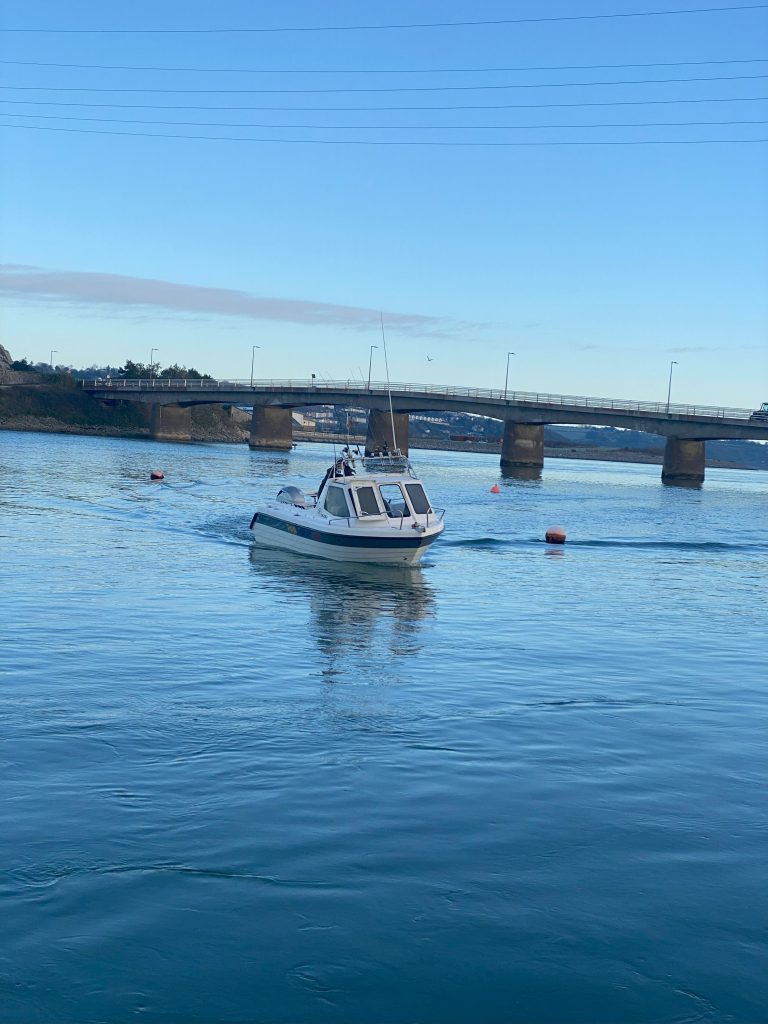
Winter running generally the preserve of the launch and retrieve angler, that is unless you leave your boat moored for the duration of the winter. Either or it is clear that attention to detail is important to ensure that your day on the water is a decent one during the winter months.
I’ll take this article from a launching skippers perspective rather than a moored one but as you will see; many of the things that are important are important regardless of where your boat is located.
There’s a good chance that when you spot a winter weather window that your boat hasn’t been in the water for a while. In winter I take much of the equipment off my boat so the first thing I’ll be doing is getting the gear that I need onboard. For, me that includes electrics and most of my tackle other than leads and my seat box. Most of everything else has been removed to the shed.
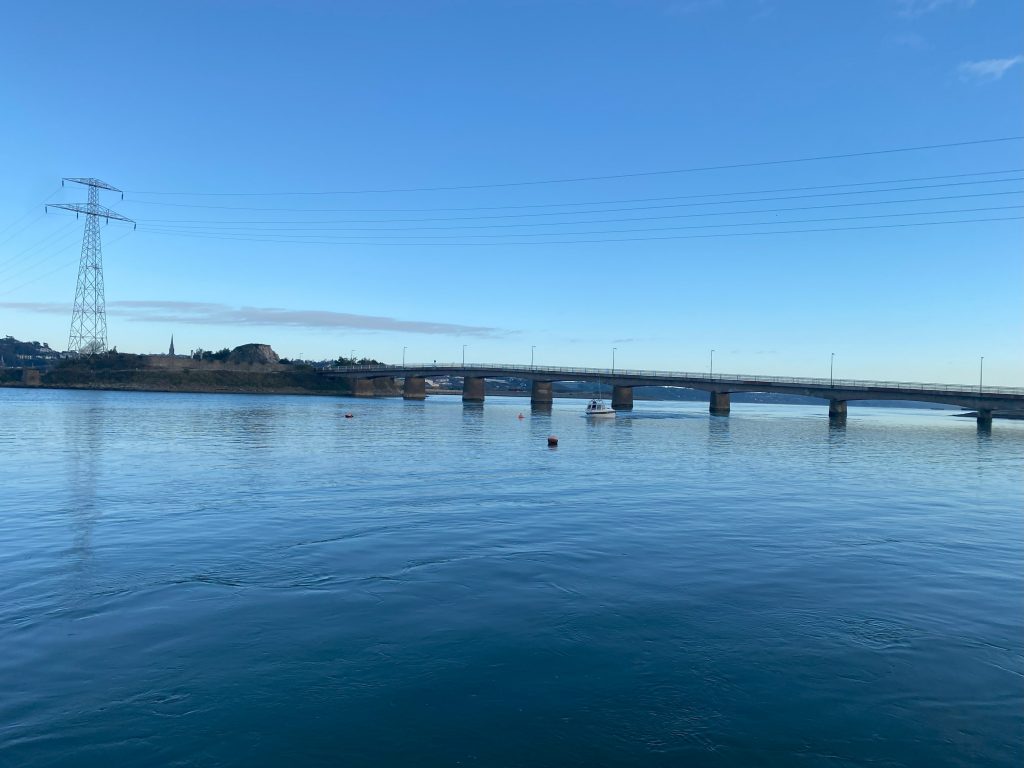
At any time of year you try and get as little problems as possible by ensuring that all your equipment is working properly. Winter time is tough on gear. In the summer frequent use tends to look after testing. In winter it is different, and the principle is simple: Do all your testing at home before heading for the slipway. You have your tools and equipment at home you may struggle to fix at the slipway.
Take my most recent trip. We were watching a weather window develop and while it looked like it could be cold it also looked like it would be very fishable. It was going to be a day where we could go to sea rather than fishing harbours and inshore. So that was the first bit of decision making done: Where would we fish? Once we had decided I knew based on my last trip that I had some work to do mending lures and dressing up a few crazy sandeels to make up for previous losses. Once that work was done I loaded up the terminal tackle on the boat.
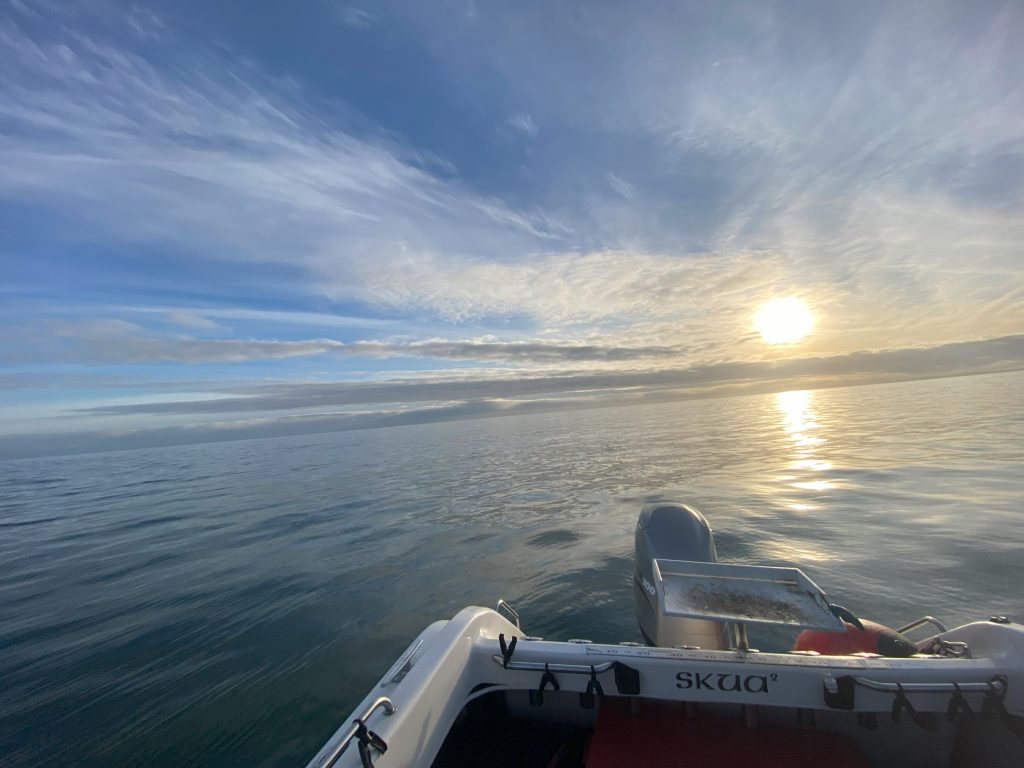
Rods and reels I would have little worry about. My reels are given a rinse after each trip and once that are hanging I give them a spray of silicone oil and it seems to keep them looking super. I had changed line roller bearings earlier in the year so I had little to do on that front.
The Business End.
A quick walk around the tailer is just about all you can do. Maybe give bearings and hitch a shot of grease if you haven’t done so in a while. I check my lights and sprayed the contacts with contact spray to be sure of decent connection. I have an electric winch that works from Anderson plugs and I take my power from the vehicle. If I had separate battery power I’d be checking that too. I sprayed the fittings and test the winch for operation. Another thing that shouldn’t go wrong.
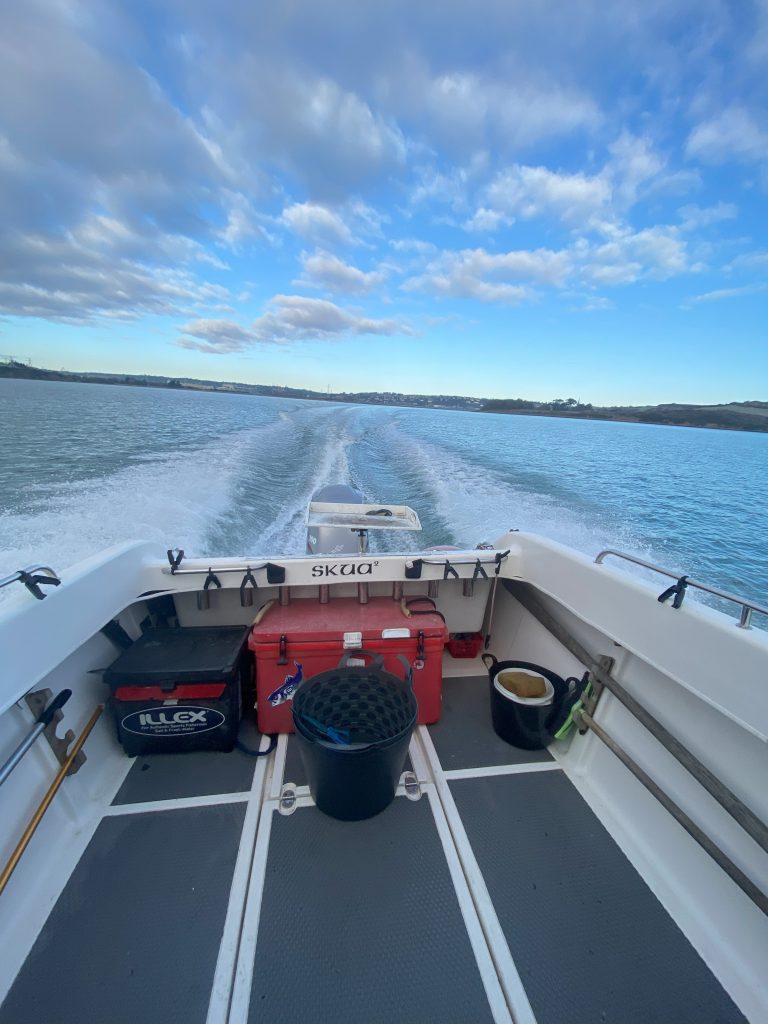
On the boat I checked the battery using the motors test facility. That tells me that the battery id “OK”. I popped on the muffs and gave the motor a quick run. I fitted my onboard electronics giving all connectors a spray of contact oil and then powered up GPS, FishFinder and VHF to be sure all is working fine. I checked my battery pack to be sure I had 100% of power available should I need it. While I was there a quick wiggle of the hydraulic steering to make sure that working OK too with no leaks visible (Many a skipper has had the heartache of a stuck cable steering system after a lay up).
Over the recent weeks of inactivity and what seem to be an endless amount of rain the boat needed a bit of a scrub down to make it look presentable. Finally, I waxed my windows, something I do before each trip. There was nothing more but wait for the morning.
The Morning of the trip
I won’t bore you with the gastronomic delights aboard Skua other to say we don’t cook onboard – we are not a picnic boat! So flasks are packed with the grub and loaded aboard.
This morning the weather was forecast to be very cold. Now very cold to me tend to be a light coating of frost so something like 0° would be cold. The forecast hinted at around -2° so I was somewhat surprised to see the reading of -6°. Very cold indeed. We had a quick WhatsApp meeting and we decided that we were going to travel regardless. I have a fairly handy tow to the launch site and roads were both dry and salted.
Cold weather running
You can imagine the boat was iced up. I popped on a pair of gloves and gently prised the cover off once I got the thumb buckles open. The cover can stick to the boat so be careful not to force the cover. It was like a plank! The engine cover just popped off. Care had to be taken getting in to the boat as the steps were quite icy.
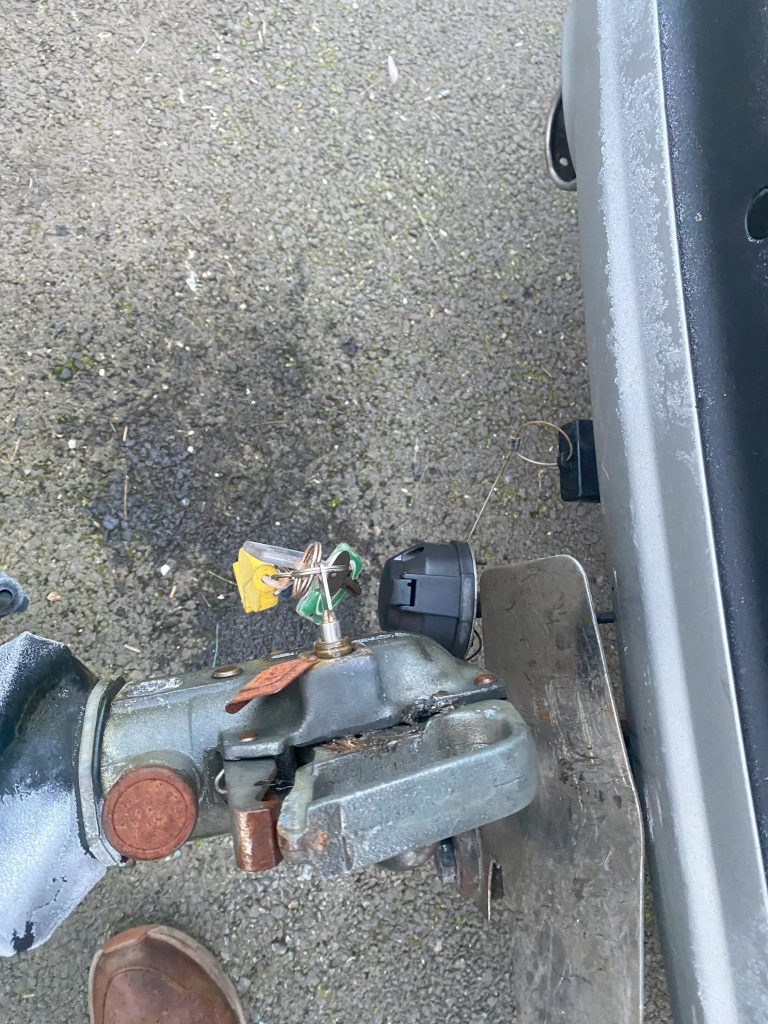
I backed up the wagon to hitch up and to my surprise the hitch lock was frozen and wasn’t budging. Nothing for it but to take the heat gun and thaw it out. After that it was plain sailing on the tow to the slipway until we got to the garage to top off the fuel. The 175 have an inboard tank and there is a plastic hinged cap located midship on the port side. Quick thinking from Paul and he produced a cup of warm water from the coffee machine and we were soon back in business.
Keeping the body warm.
There was a time I would be donning a one-piece floatation suit. In recent years I tend towards layers. So layered up like an onion I was. I always dislike my feet being cold so I have a decent pair of long heavy socks that are tried and tested. I wear my breathable waders at this time of year so they take care of the wind chill. A snood or Buff around the neck and can be pulled up to cover the face completes the ensemble. Not winning any fashion shows, but I’ll be warm. I am not one for wearing gloves while fishing so I keep my hands warm in between drifts with a couple of pairs of gloves one being waterproof and fleece-lined. It’s always a good idea to carry a spare set of gloves as they may get wet.
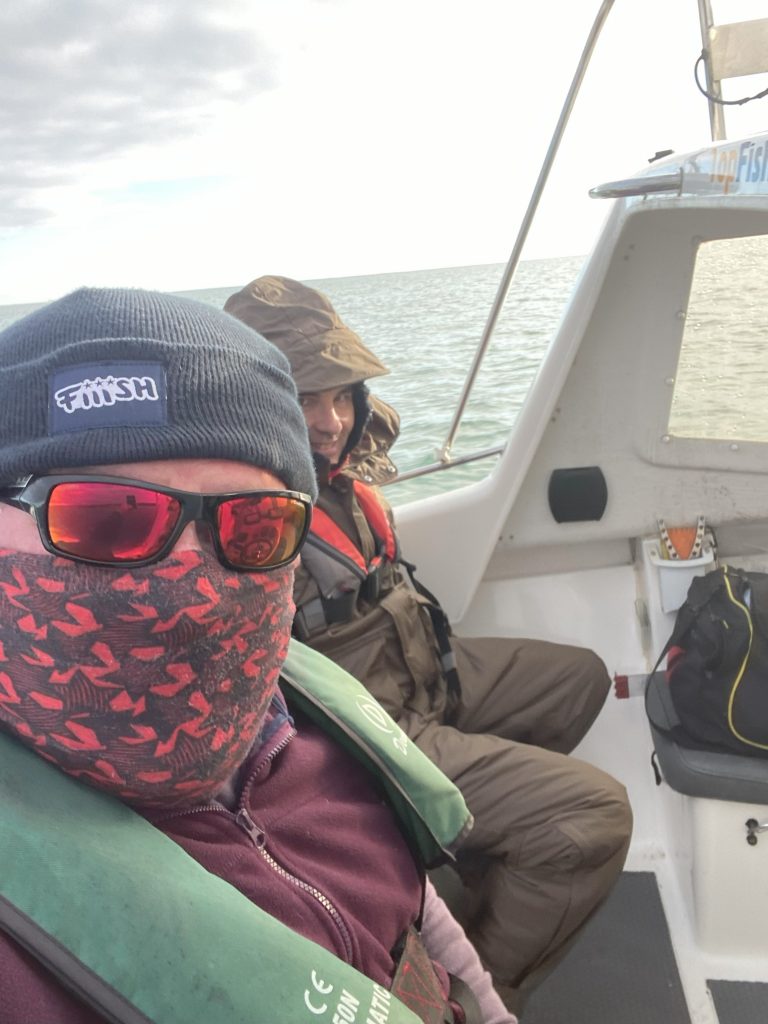
The Launch
Our timing was considered to be sure that we had some sunshine when we would hit the water. The sky was blue and the watery sun was very bright and low in the sky. Sunglasses are a must.
Winter launching procedure has us backing the boat into the water and while the boat is on the trailer we give the engine a start. Winter is hard on gear in general but especially hard on batteries. The Mariner F100 gave one slow turn (unusual) before firing into life. I could see immediately the the tell tale was not pouring water. At these extremely cold tempertures I was happy that the warming motor would free out the pisser and sure enough after a few minutes watching the engine temperature a steady stream of water began to flow. That was all the drama. We could then concentrate in locating some fish in the 6.8° degree water.
In conclusion
So, you can see that winter fishing requires a little bit more attention to detail than our normal frequent summer runs. I think the most important thing is to do your testing at home and not arrive and get surprised at the slipway by something that could be sorted much easier at home base.
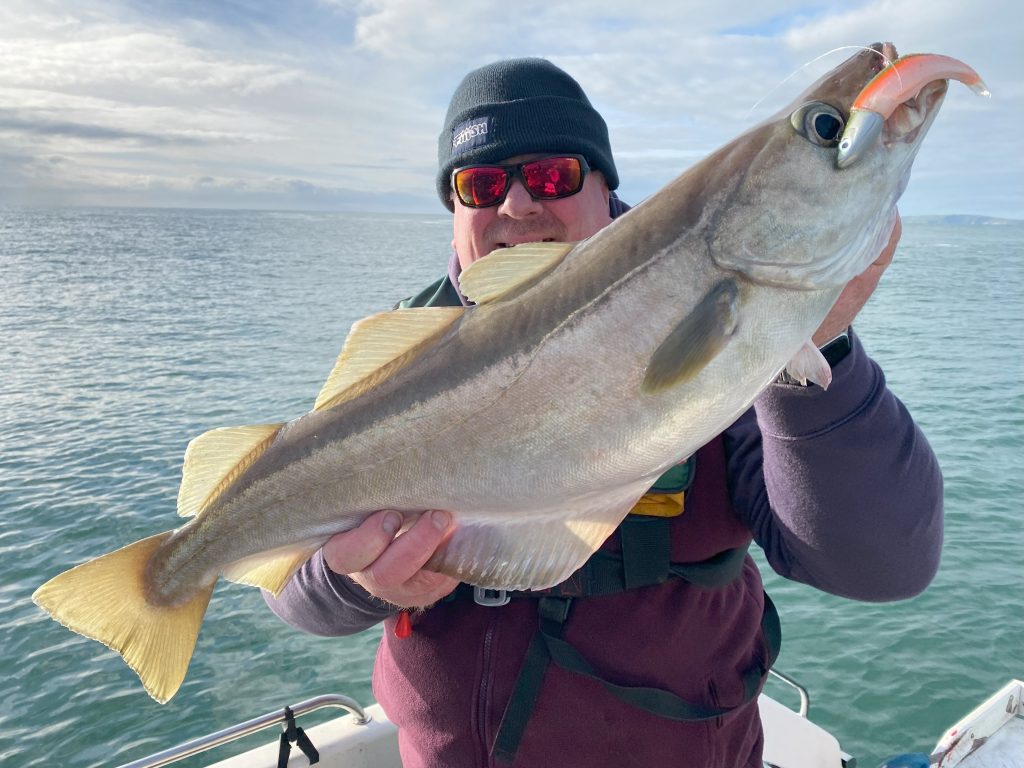
What’s available to fish for in the depths of winter?
Round our way there are a few options. If conditions allow I’ll always take a run out. We could sniff about the harbour and fish lures or bait. Unfortunately the cod-run of old seems to be no more. Such a pity as this fishery gave endless trips of great fishing especially since the arrival of more modern lure techniques. We can fish wrecks and maybe even fish deeper ground with bait but there is nothing like a session in winter on the lures. It’s great active fishing that keeps the body warm and the mind active.
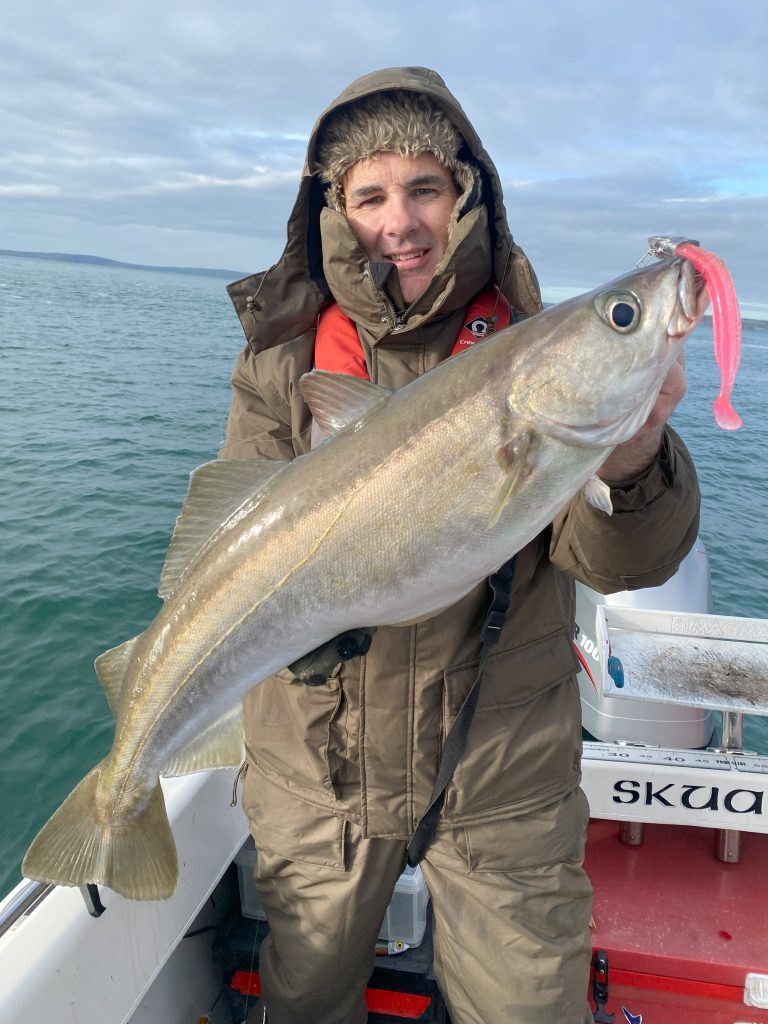
We headed for some reefs that are anywhere from 60 feet to 140 feet. With my usual gear, a 60g jighead is enough to fish the water column and also to hug the bottom. Light rods of 2.1m mated with 3500 or 2500 series reels loaded with the thinnest braid you can get. It’s a great way to fish.
Your choice of venue in the winter can be very much ruled by the clarity of the water. You may find that you will have to push off further in order to find cleaner water. This would definitely be the case in a window of weather after a blow or a prolonged period of wet weather. Our session was in the middle of a prolonged period of high pressure so there were no issues with dirty water, cold was the main problem.
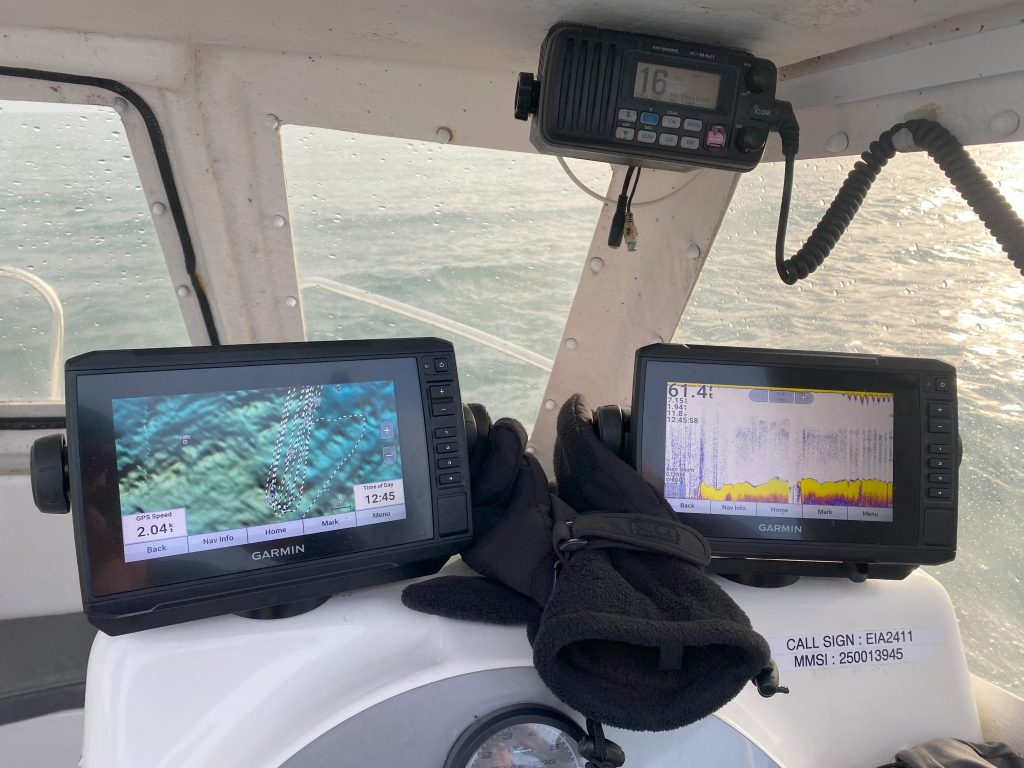
We headed to a patch of reefy ground that we regularly fish and we were quickly into fish. Pollack. They were not high in the water column but were hunkered down on the bottom. We were both inclined to bounce our lures keeping contact with the bottom as this is a sure-fire way to lure a cod. There were no cod around but most of the pollack took the lures off the bottom and fought doggedly to the boat with not so many crash dives that you would be used to.
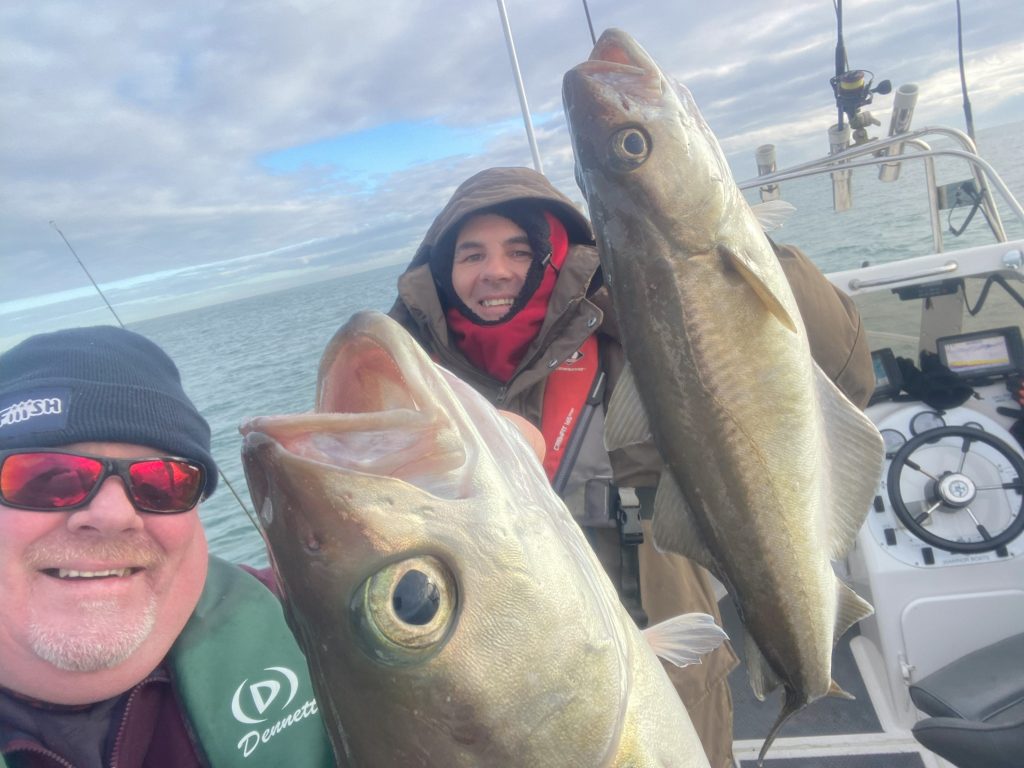
I varied my lure styles and colours. A pink FIIISH Crazy Paddletail did wreck until an unforgiving piece of reef claimed it. I was gutted! We moved around the reefs trying to locate cod but it was clear that the cod’s day is largely done in this patch. In situations like this, where you are searching, Relief Shading on the GPS is very useful. It allows you to be sure that you are covering all possibilities, and it invariably throws up and area that you may not have fished before. I would say to be careful not to let it rule your fishing though, plan to fish and fish to the plan.
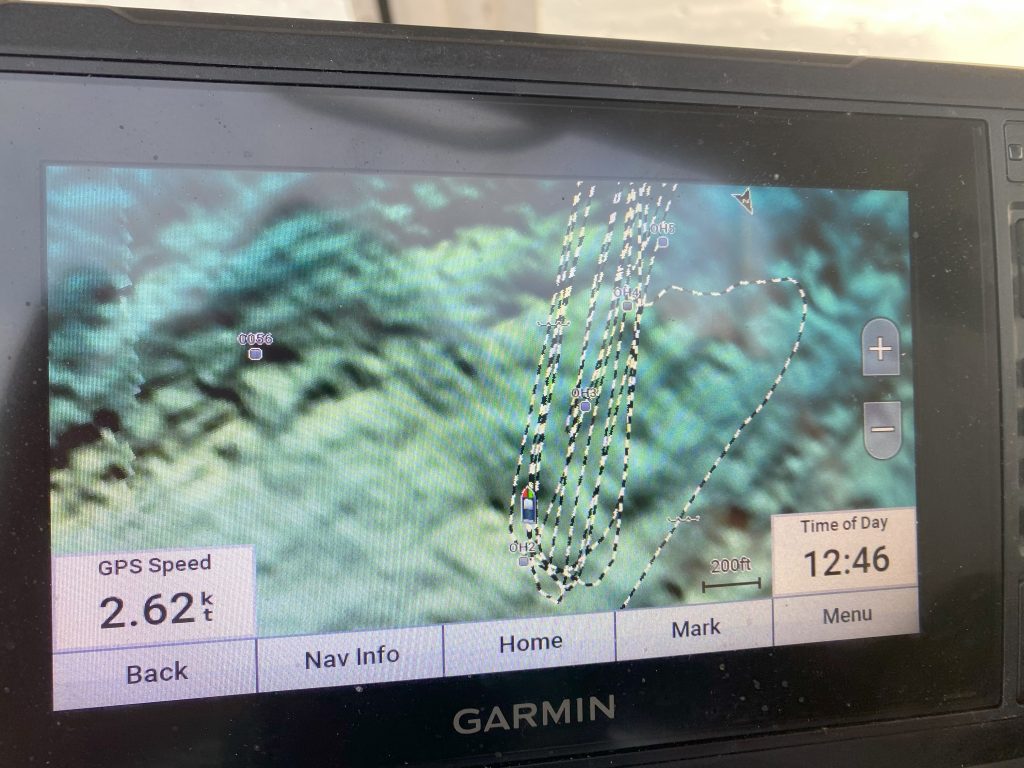
Winter fishing tends to offer short fishing days. For us, the temperature began to drop from a balmy 4° to zero quite quickly. We were heading for home base as it got colder. We knew we had a bit of time to give to filleting some fish. By the time we touched down at home base after an uneventful tow it was -2°. The cover had turned crispy with ice again, if it even had thawed during the day.
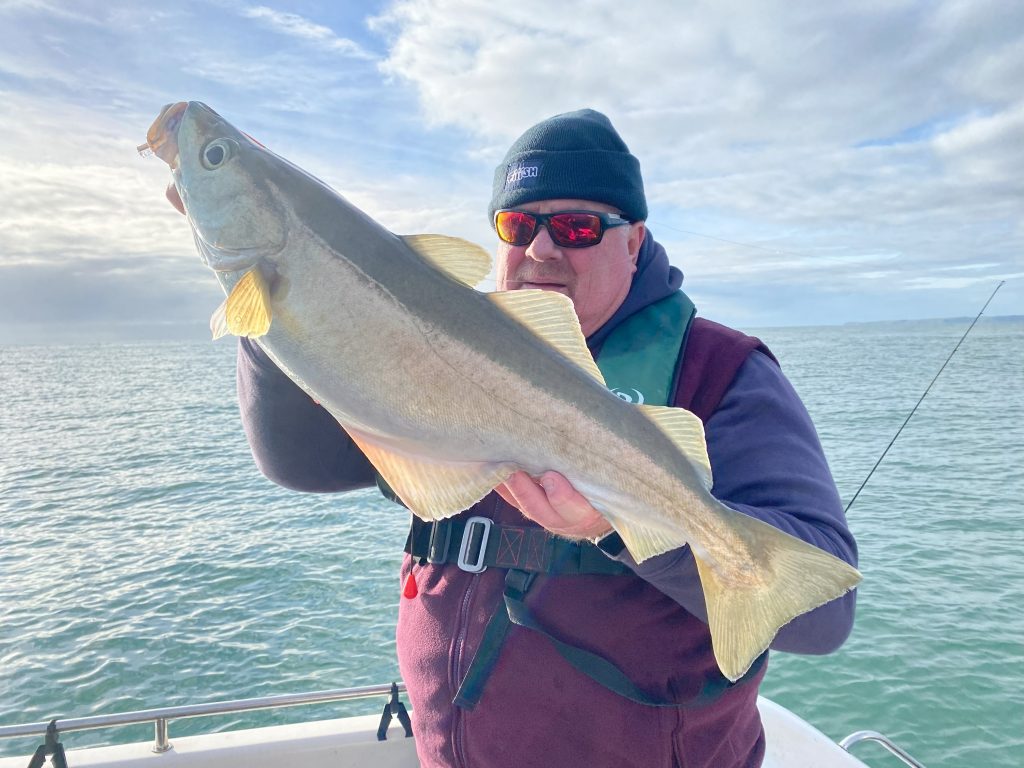
Winter is not easy. It can be testing enough and sometimes the results just don’t happen. Would it stop me from looking forward to the next weather window? Not a hope!
